
John Starforth (1822-1898) was an English-born architect and architectural author associated solely with work in Scotland, mainly working in Lothian, Dumfries & Galloway, and the Scottish Borders.

John Starforth (1822-1898) was an English-born architect and architectural author associated solely with work in Scotland, mainly working in Lothian, Dumfries & Galloway, and the Scottish Borders.




He was born in the town of Auckland near Durham in northern England, in July 1822 the son of John Henry Starforth or Starford, and his wife Elizabeth Moor. He was apprenticed as an architect under Thomas Hamilton in the 1830s, based in Edinburgh (probably aged 14). Around 1840 he moved to the firm of Burn & Bryce, staying with David Bryce when William Burn left to set up in London in 1844. [1]
He set up an independent practice around 1850, specialising in churches and country villas and farmsteads. In 1864 he entered the competition for the Scottish National Albert Memorial (now in Charlotte Square). Although unsuccessful his drawings were displayed in the 1886 Edinburgh Exhibition on The Meadows.
He died of a heart attack whilst walking on Princes Street, to his home at 37 York Place [2] in Edinburgh's New Town, on 18 May 1898.
He was married to Helen Henderson (d.1916). They had two daughters and three sons, including Robert H. Starforth, who continued his father's architectural practice but was of lesser note. Helen moved to Ayr following her husband's death.
See [1]

Sir Robert Rowand Anderson, was a Scottish Victorian architect. Anderson trained in the office of George Gilbert Scott in London before setting up his own practice in Edinburgh in 1860. During the 1860s his main work was small churches in the 'First Pointed' style that is characteristic of Scott's former assistants. By 1880 his practice was designing some of the most prestigious public and private buildings in Scotland.

Thomas Hamilton was a Scottish architect, based in Edinburgh where he designed many of that city's prominent buildings. Born in Glasgow, his works include: the Burns Monument in Alloway; the Royal High School on the south side of Calton Hill ; the Royal College of Physicians of Edinburgh; the George IV Bridge, which spans the Cowgate; the Dean Orphan Hospital, now the Dean Gallery; the New North Road Free Church, now the Bedlam Theatre; Cumstoun, a private house in Dumfries and Galloway; and the Scottish Political Martyrs' Monument in Old Calton Cemetery, Edinburgh.
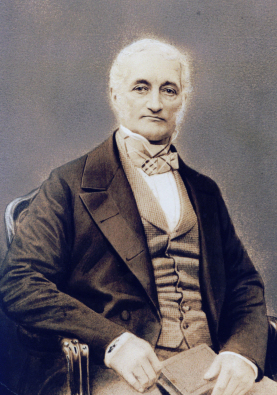
William Burn was a Scottish architect. He received major commissions from the age of 20 until his death at 81. He built in many styles and was a pioneer of the Scottish Baronial Revival, often referred to as the golden age of Scottish architecture.

David BryceFRSE FRIBA RSA was a Scottish architect.
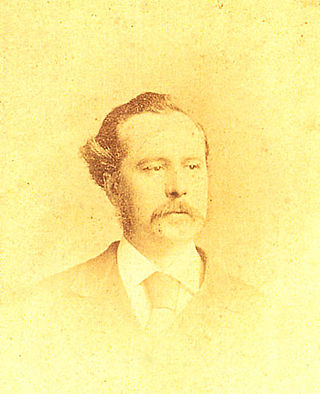
Edward Welby Pugin was an English architect, the eldest son of architect Augustus Welby Northmore Pugin and Louisa Barton and part of the Pugin & Pugin family of church architects. His father was an architect and designer of Neo-Gothic architecture, and after his death in 1852 Edward took up his practice. At the time of his own early death in 1875, Pugin had designed and completed more than one hundred Catholic churches.

John Thomas Rochead was a Scottish architect. He is most noteworthy on a national scale for having been the designer of the Wallace Monument.

Hippolyte Jean Blanc was a Scottish architect. Best known for his church buildings in the Gothic revival style, Blanc was also a keen antiquarian who oversaw meticulously researched restoration projects.

Crossmichael is a small village on the east side of Loch Ken in the historical county of Kirkcudbrightshire, about 4 miles (6.4 km) north of Castle Douglas in Scotland.
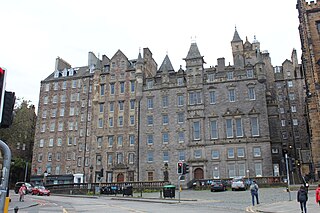
David Cousin was a Scottish architect, landscape architect and planner, closely associated with early cemetery design and many prominent buildings in Edinburgh. From 1841 to 1872 he operated as Edinburgh’s City Superintendent of Works.
James Campbell Walker was a Scottish architect in the 19th century, practising across the country and specialising in poorhouses and schools. His main claim to fame is in having designed Dunfermline Carnegie Library, the world's first Carnegie library, in Andrew Carnegie's home town of Dunfermline.

Archibald Campbell Douglas was a Scottish architect based primarily in Glasgow. He designed many churches in Glasgow and Edinburgh, especially those for the Free Church of Scotland.
Robert Reid Raeburn was a Scottish architect in the mid-19th century operating primarily in and around Edinburgh.
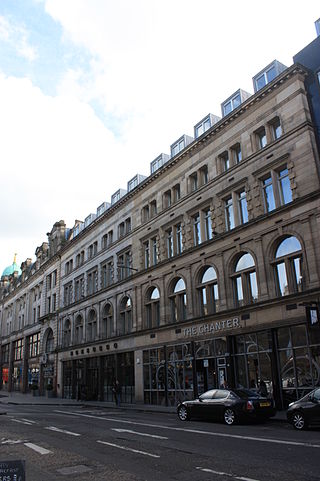
John McLachlan was a Scottish architect, based in Edinburgh operating in the late 19th century. He was a brother-in-law to Robert Morham. He has been described as a "minor master".

Charles George Hood Kinnear FRIBA ARSA FRSE was one half of Peddie & Kinnear partnership, one of Scotland’s most renowned and prodigious architectural firms. They were noted for their development of the Scots Baronial style, typified by Cockburn Street in Edinburgh, which evokes a highly medieval atmosphere. Kinnear was also a pioneer photographer credited with inventing the bellows attachment on early cameras.

John Milne (1823–1904) was a Scottish architect operating throughout the second half of the 19th century, working largely in the Fife area. He was described as an ‘’inventive neo-Jacobean and Scots Baronial designer’’. He exhibited works at the Royal Scottish Academy in the 1860s. He was also an inventor of a pyro-pneumatic grate: a heating system for churches. He self-financed several improvement schemes to the town of St Andrews
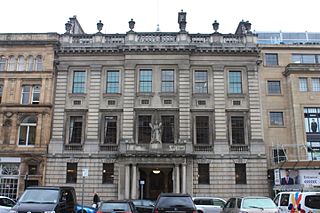
Alexander Hunter Crawford (1865–1945) was a Scottish architect and businessman. Closely associated with his father's firm of Crawford's Biscuits he designed many biscuit factories, and became owner of the company in 1931. Many of his villas are now listed buildings. His masterpiece is probably the huge Masonic Lodge on George Street in Edinburgh.

Hugh Martin was a Scottish minister of the Free Church of Scotland and a theological author.

Greyfriars Church, Dumfries, is a Category A listed building in Dumfries, in southwest Scotland. The current Greyfriars Church building was built from 1866 to 1868 in the Victorian Gothic style, designed by architect John Starforth. It is situated in a prominent position at the top of the High Street, and is constructed of local red sandstone taken from Locharbriggs Quarry. The building has an abundance of ornate decorative stonework, including impressive figures and foliage around the entrance doorway. These carvings are attributed to local stonemason and sculptor, William Flint.

Anwoth Parish Church was built in 1826 to serve the parish of Anwoth in Dumfries and Galloway, Scotland. Designed by Walter Newall, it replaced Anwoth Old Church, which had been the parish church since it was built in 1626 and was partially demolished at the same time as the new church was built.
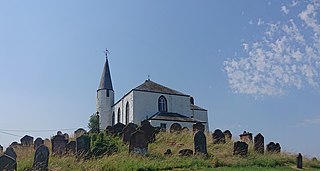
Crossmichael Parish Church is an ecclesiastical building in Crossmichael, Dumfries and Galloway, Scotland. It lies on a knoll, which was probably an ancient site of worship, at the north end of the village. Its tower may date from 1611, but the main block was built in 1749–1751, and there were additions and alterations in the nineteenth century. Its interior is an unusually complete example of Georgian church design. It was designated a Category A listed building in 1971.